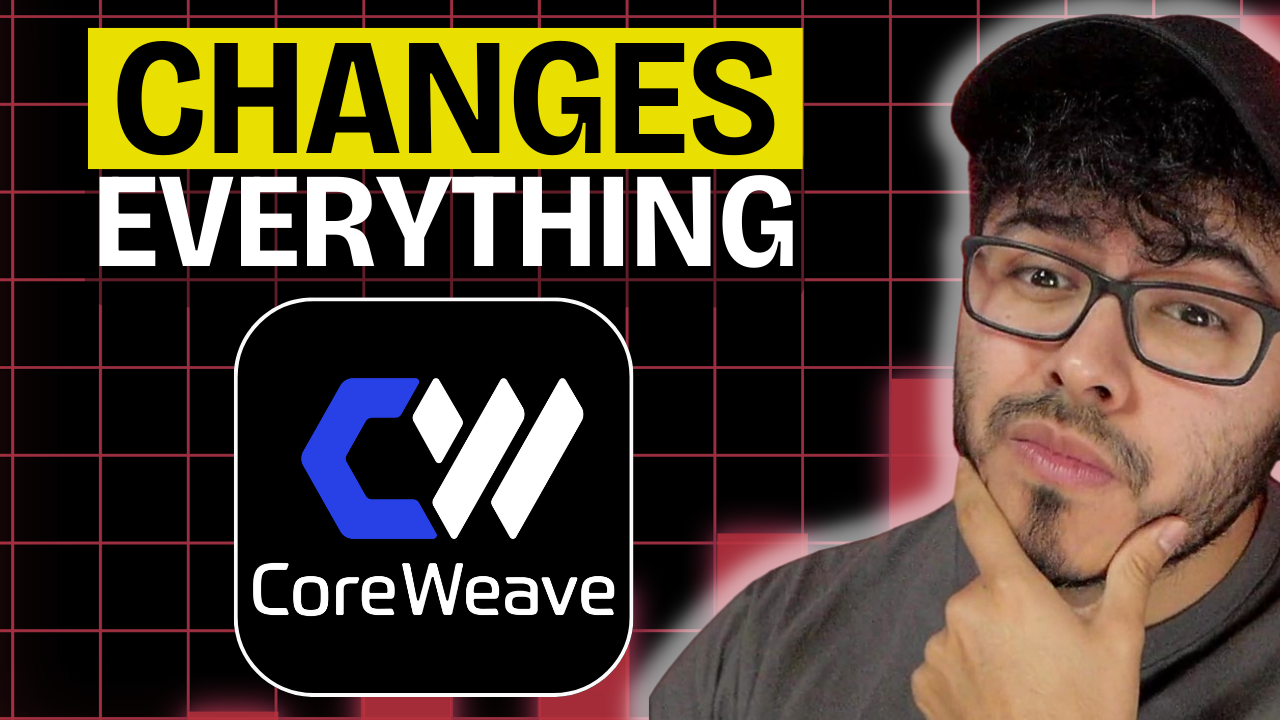The demand for cloud computing infrastructure used to help train artificial intelligence (AI) models and deploy them into production is increasing at an incredible pace. It's one of the main reasons why shares of CoreWeave (CRWV 7.12%) and Oracle (ORCL 5.40%) have been in fine form on the stock market in 2025.
Both companies rent out AI-focused data centers powered by premium graphics processing units (GPUs) from the likes of Nvidia, AMD, and others. To meet the increasing demand, both companies are quickly adding significant new data center capacity. The size of the cloud infrastructure market is expected to grow from around $178 billion this year to more than $1.1 trillion in 2033, with AI set to play a key role in this remarkable growth. Oracle and CoreWeave aim to help investors take advantage of this massive opportunity.
Both stocks have real potential for outsized performance, but if you have to choose just one of these AI stocks, which one should you buy? Let's find out.

Image Source: Getty Images
The case for Oracle
Oracle's stock price is up 50% over the past 12 months, and it seems set for more upside going forward, given the impressive pace at which the demand for its cloud infrastructure is increasing. The company released its fiscal 2025 fourth-quarter results (for the three months ended May 31) earlier this month, and it reported a solid 41% year-over-year increase in its remaining performance obligations (RPO) to a whopping $138 billion.
RPO refers to the total value of a company's contracts yet to be fulfilled, which means that Oracle is sitting on a huge revenue pipeline that could help it grow at a much stronger pace following last year's top-line increase of 8% (totalling $57.4 billion). Not surprisingly, Oracle expects its revenue growth rate in fiscal 2026 to almost double.

NYSE: ORCL
Key Data Points
The company's Oracle Cloud Infrastructure (OCI) segment will play a central role in driving this acceleration as its revenue is expected to increase by 70% in fiscal 2026, following a 51% increase in fiscal 2025. What's more, Oracle management points out that it may be understating its RPO growth as the contracts from the $500 billion Stargate AI infrastructure project are yet to reflect in its revenue pipeline.
As a result, Oracle is going to continue investing aggressively in building more capacity, increasing its capital expenditure to about $25 billion in the current fiscal year from just above $21 billion in the previous one. The company points out that its revenue and earnings growth will keep getting better as it brings online more data centers to satiate the AI-fueled demand for cloud infrastructure.
So, it is easy to see why analysts have raised their revenue growth expectations from Oracle and are expecting its top-line growth to gather stronger momentum over the next couple of fiscal years.
Data by YCharts.
As such, Oracle is set to remain a top cloud AI stock going forward, but can it outperform CoreWeave?
The case for CoreWeave
While Oracle is an established player in the cloud infrastructure market, CoreWeave went public in March of this year. What's worth noting is that CoreWeave stock has delivered phenomenal gains of more than 300% to investors in its short life as a public company, and that's not surprising as the company has been growing at a stunning pace.

NASDAQ: CRWV
Key Data Points
CoreWeave released its Q1 results in May, and it reported a massive 420% year-over-year increase in revenue to $981 million. Just like Oracle, the company's revenue backlog has been increasing at a nice pace, and it is focused on adding more capacity to meet the booming demand for its cloud AI infrastructure.
CoreWeave ended Q1 with a revenue backlog of almost $26 billion, up by 63% from the year-ago period. This was faster than the growth in Oracle's RPO. Major tech giants such as OpenAI and IBM have been tapping CoreWeave's infrastructure for AI model training and running inference applications. OpenAI, for instance, signed a deal worth $11.2 billion with CoreWeave last quarter.
Additionally, one of its existing customers extended its contract with CoreWeave to the tune of $4 billion. This explains why the company is scrambling to increase its data center capacity. It is forecasting $20 billion to $23 billion in capital expenditure this year as compared to last year's outlay of $8.3 billion. CoreWeave's capex, therefore, will be close to what Oracle is planning in the current fiscal year.
That's a smart thing to do, considering the impressive revenue backlog that CoreWeave is sitting on. It is worth noting that CoreWeave intends to increase its data center power capacity by almost 4x based on its current contracts, which should enable the company to meet the fast-improving end-market demand.
CoreWeave's revenue forecast of $5 billion for the current year points toward a big increase from last year's top line of $1.9 billion. As the company brings online more capacity, it is easy to see why its revenue growth is expected to remain robust over the next couple of years as well.
Data by YCharts.
CoreWeave sees its addressable market reaching a whopping $400 billion by 2028, so the probability of faster growth in the company's top line cannot be ruled out, thanks to its aggressive capacity expansion. Hence, there is a good chance that CoreWeave's growth will be much faster than that of Oracle's going forward.
The verdict
While both companies are set to grow at a healthy pace, CoreWeave's growth is on track to outpace Oracle's by a huge margin. However, investors will have to pay a rich premium to buy CoreWeave stock as it is trading at just under 30 times sales, which is almost 3x when compared to Oracle's price-to-sales ratio.
Also, CoreWeave isn't profitable yet because of the huge investments that it is making in AI infrastructure, though analysts expect it to get into the black in the next couple of years.
Data by YCharts.
Oracle, on the other hand, trades at 30 times forward earnings, which is just above the 28.6 times forward earnings that the tech-laden Nasdaq-100 index is trading at. The good part is that Oracle's earnings are expected to increase at a faster pace of 21% in the next fiscal year, following a 12% jump in the current one.
So, investors looking for an AI stock that isn't all that expensive but has the potential to deliver steady growth can consider taking a closer look at Oracle. Meanwhile, those looking for potentially bigger gains and are willing to pay an expensive multiple could be interested in CoreWeave stock, given its tremendous growth, which seems sustainable.








